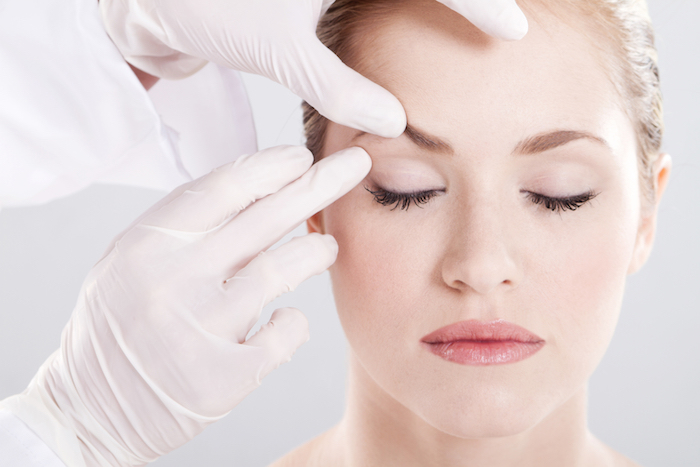Asian blepharoplasty, often referred to as double eyelid surgery, is a specialized form of eyelid surgery that enhances or creates a crease in the upper eyelid. This procedure is highly sought after by individuals of East and Southeast Asian descent who may naturally have a monolid or an indistinct eyelid crease. Unlike Western blepharoplasty, the goal here is not to “Westernize” the eyes but to enhance natural features while preserving ethnic identity. If you’re considering eyelid surgery in Riyadh, it’s essential to understand how Asian blepharoplasty differs from other techniques and why it requires a highly tailored approach.
What Is Asian Blepharoplasty:
Asian blepharoplasty is a cosmetic surgery designed to create or define a visible eyelid crease in individuals who naturally lack one or have a very low crease. This procedure is different from traditional eyelid surgery because it focuses on subtle, refined alterations that respect the natural anatomy of the Asian eyelid. It may involve removing minimal fat, adjusting skin tension, or modifying the levator muscle to achieve the desired result.
Anatomical Differences in Asian Eyelids:
Asian eyelids typically differ from Caucasian eyelids in several ways, making a standard blepharoplasty approach unsuitable. The most common characteristic is the absence of a visible supratarsal crease, often referred to as a monolid. Other differences include a lower fat distribution and a different attachment of the eyelid muscles and skin.
Key anatomical distinctions include:
A lower or absent upper eyelid crease
Fuller upper eyelids due to fat distribution
A lower attachment of the orbital septum
Thicker skin in the upper eyelid region
Narrower palpebral fissure (eye opening)
Understanding these features is crucial in achieving natural, balanced outcomes without compromising cultural identity.
Surgical Techniques Used in Asian Blepharoplasty:
There are several surgical methods used in Asian blepharoplasty, and the choice depends on the patient’s anatomy, goals, and desired crease height. The procedure can be non-incisional, partially incisional, or fully incisional. Each approach has its benefits and is selected based on precision, recovery time, and permanence of results.
Common techniques include:
Non-incisional (suture method): Ideal for minimal fat and younger patients
Partial incision method: Offers natural results with shorter healing time
Full incision method: Suitable for those with excess skin or fat, offers long-term results
All techniques aim to preserve a natural eyelid shape while creating a crease that complements the patient’s facial proportions.
Cultural Sensitivity and Aesthetic Goals:
Asian blepharoplasty is not about erasing ethnicity but enhancing individuality. Many patients seek the surgery not to appear Western but to achieve larger-looking, more defined eyes while maintaining a distinctly Asian appearance. Surgeons must therefore approach each case with cultural sensitivity and an artistic understanding of ethnic beauty standards.
Aesthetic goals may include:
Creating a natural-looking crease (not too high or deep)
Maintaining symmetry between both eyes
Enhancing the upper eyelid contour
Preserving natural skin tone and features
In cities like Riyadh, where diverse populations seek cosmetic treatments, finding a surgeon experienced in Asian eyelid anatomy is key to achieving culturally respectful outcomes.
Benefits of Asian Blepharoplasty:
This procedure offers both cosmetic and practical benefits. While many patients choose it for aesthetic reasons, some find functional improvements as well, especially in the ease of applying makeup or reducing irritation from skin rubbing against the eye.
Benefits may include:
Enhanced eye definition and openness
Improved facial symmetry
Easier makeup application
Long-lasting, natural-looking results
Boost in self-confidence
Patients opting for eyelid surgery in Riyadh often find that Asian blepharoplasty, when performed by an experienced surgeon, delivers results that honor their heritage while meeting personal beauty goals.
Considerations Before Undergoing the Procedure:
Like any surgery, Asian blepharoplasty requires careful planning and realistic expectations. It’s important to understand the risks, downtime, and permanence of the procedure. Choosing the right surgeon with a background in ethnic blepharoplasty is essential to avoid complications like asymmetry, unnatural creases, or scarring.
Things to consider before surgery:
Desired crease height and eyelid shape
Skin thickness and fat distribution
History of previous eyelid surgeries or treatments
Recovery timeline and aftercare
Risks such as infection, swelling, or asymmetry
A comprehensive consultation will help clarify what’s achievable and appropriate based on your facial features.
Recovery and Healing Process:
Recovery from Asian blepharoplasty depends on the technique used. Non-incisional methods generally have a quicker recovery time, while incisional techniques may involve more swelling and bruising. However, most patients return to normal activities within 1–2 weeks.
Typical recovery timeline:
Days 1–3: Swelling and mild discomfort peak
Days 4–7: Stitches (if used) are removed
Week 2: Most bruising resolves; light activities resume
Weeks 3–4: Crease begins to settle into its final shape
1–3 months: Full results are visible and natural-looking
Following post-operative instructions and attending follow-up appointments are essential for achieving the best outcome, especially when undergoing eyelid surgery in Riyadh or any specialized location.
Final Thoughts:
Asian blepharoplasty is a unique and delicate procedure that blends surgical precision with an understanding of cultural beauty. By recognizing the distinct anatomy of Asian eyelids and respecting the patient’s aesthetic goals, surgeons can create beautiful, natural-looking results. Whether you’re seeking a subtle crease enhancement or a more defined eyelid contour, this specialized form of blepharoplasty offers long-term benefits in both appearance and self-confidence. If you’re considering eyelid surgery in Riyadh, be sure to consult a skilled, culturally aware specialist who understands the nuances of Asian eyelid anatomy and surgical technique.
 :
https://www.royalclinicsaudia.com/ar-sa
:
https://www.royalclinicsaudia.com/ar-sa

